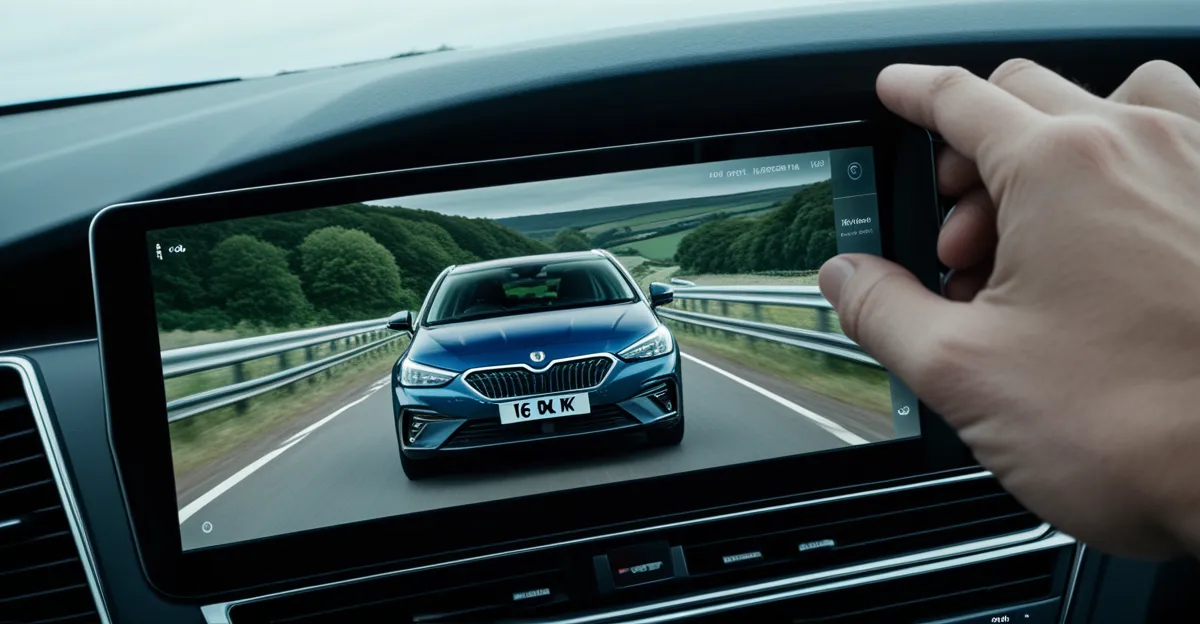Overview of Automotive Safety Technologies in the UK
The automotive industry in the UK has seen significant transformations with the integration of advanced automotive safety technologies. These innovations aim to enhance the safety of drivers, passengers, and pedestrians alike while striving to meet stringent UK regulations.
Recent advancements include the incorporation of smart systems designed to predict and prevent accidents before they occur. Notable technologies, such as collision detection systems and automated emergency braking, have become standard in many vehicles. Meanwhile, lane-keeping assistance and adaptive cruise control continue to see improvement, offering more dynamic driving assistance.
Also to discover : What Are the Future Challenges Faced by the UK Automotive Industry?
The UK regulations play a crucial role in shaping these technologies, enforcing standards that ensure all safety features are both functional and beneficial. Compliance with these regulations often requires manufacturers to innovate continuously, staying ahead of any legislative changes that may affect their systems.
Industry trends also play a pivotal role in guiding the development and implementation of safety features. As public awareness of vehicular safety ascends, consumer demand for effective safety technologies influences manufacturers to enhance their product offerings. Staying abreast of these trends helps companies not only comply with UK regulations but also exceed consumer expectations, thus creating safer road environments for everyone.
Also to see : How are UK automotive companies integrating renewable energy in production?
Latest Innovations in Safety Features
Recent years have brought a wave of advancements in advanced driver assistance systems (ADAS), emphasizing enhanced safety for drivers and pedestrians alike. Automated Emergency Braking (AEB) has become a critical component, automatically applying brakes when sensors detect an imminent collision. This system significantly reduces accidents, providing peace of mind and faster response times than human reflexes.
Adaptive Cruise Control Systems
Adaptive Cruise Control (ACC) has revolutionized the driving experience by adjusting a vehicle’s speed based on the flow of traffic. In UK vehicles, ACC ensures smoother traffic integration, automatically modulating acceleration and braking to maintain safe distances. Its predictive capabilities further support accident prevention, making road travel safer.
Automated Emergency Braking
Automated Emergency Braking, with its heightened sensitivity and precision, is pivotal in urban settings where quick reactions are necessary. By employing radar and camera technologies, AEB systems prevent collisions in scenarios like sudden stops or obstacles. These features are now standard in many vehicles, reflecting the industry’s dedication to safeguarding road users.
Lane-Keeping Assistance Technologies
Lane-Keeping Assistance technologies work to correct unintentional lane departures, an innovation appreciated in situations of driver fatigue or distraction. By using intelligent algorithms and real-time data, these systems offer corrective steering inputs. This technology enhances vehicular stability and aligns with the overarching goal of accident prevention in UK roadways.
Role of Technology in Accident Prevention
The integration of advanced technologies in vehicles has yielded a significant impact on accident statistics, showcasing the potential for accident reduction. Predictive analytics, for instance, serve as a proactive measure to foresee possible road hazards. By analyzing data patterns from connected sensors, vehicles can alert drivers to impending danger, significantly enhancing road safety.
Predictive Analytics in Collision Avoidance
Predictive analytics play a pivotal role in preventing accidents by offering real-time insights. These systems utilize vast amounts of data to predict and prevent potential collisions, thereby reducing accident frequency. The ability to anticipate and mitigate risky situations before they unfold displays the profound impact of technology on safety.
Connected Vehicles and Driver Safety
The rise of connected vehicles represents a leap forward in ensuring driver safety. Through continuous data exchange, these vehicles can communicate with each other and the surrounding infrastructure. This connectivity facilitates advanced warning systems that alert drivers about traffic conditions, construction zones, and potential accidents, thus fostering a safer driving environment.
While these technologies continue to evolve, their integration into mainstream automotive manufacturing is crucial for future accident prevention efforts. By leveraging predictive analytics and harnessing the power of connected vehicles, the UK automotive industry can make strides toward a more secure and intelligent transport ecosystem.
Regulatory Changes and Compliance
In the fast-evolving world of automotive safety technologies, keeping up with safety regulations is paramount for manufacturers. Ensuring compliance with governmental standards not only meets legal obligations but also optimizes safety features for consumer benefit. Recent regulatory changes have focused on integrating advanced safety features into vehicles, ensuring these innovations meet stringent UK standards.
Overview of Recent Regulatory Changes
The UK has introduced significant shifts in safety compliance, mandating features like Automated Emergency Braking (AEB) and Lane-Keeping Assistance Technologies in all new models. These changes aim to minimize human error and enhance overall road safety. With the inclusion of advanced driver assistance systems (ADAS), these technologies offer proactive accident prevention capabilities.
Compliance Challenges for Manufacturers
Meeting these evolving standards presents various challenges for automotive manufacturers. Adaptations in production lines and increased financial investment are necessary. Moreover, continuous updates to software and hardware ensure these safety features remain effective within the regulatory framework. Staying compliant while maintaining cost-efficiency is a delicate balancing act faced by the industry.
Future Regulatory Trends
Predictions indicate a shift towards mandating connected vehicle technology as part of standard safety requirements. This would enhance vehicle-to-vehicle communication, fostering real-time data exchange to alert drivers about potential hazards. As regulations continue to evolve, manufacturers must anticipate and innovate beyond current requirements to align with future trends, ensuring safety in an intelligent and interconnected environment.
Consumer Awareness and Education
Consumer awareness is a vital component of automotive safety, ensuring that individuals understand and utilise advanced automotive safety technologies. Greater emphasis on consumer safety education empowers drivers to make informed decisions about the vehicles they drive and the safety features they choose.
In recent years, public perception of automotive safety technologies has shifted, with more consumers acknowledging the value of systems like automated emergency braking and lane-keeping assist. This change has been driven by increased awareness of the benefits these technologies offer in reducing accident risks. Consequently, manufacturers are prioritising transparency to help consumers understand the impact of UK regulations on vehicle safety.
To facilitate informed choices, a variety of resources are available to consumers. Educational programmes, online platforms, and dealership consultations provide valuable insights into the functionality and importance of safety features. These efforts aim to bridge the knowledge gap and foster confidence in new technologies, ultimately enhancing road safety.
Case Studies of Effective Safety Implementations
In the realm of automotive safety, studying successful implementations provides valuable insights into what constitutes best practices. Analysing these cases demonstrates how technologies can lead to meaningful accident reduction, forging pathways for future innovations.
Case Study: Impact of Autonomous Technologies
Autonomous technologies have been at the forefront of vehicular safety evolution. A notable instance is the deployment of autonomous vehicles in controlled environments, such as designated urban areas. These vehicles employ a suite of sensors and advanced algorithms to navigate and respond to road conditions dynamically. Real-life data suggests a substantial decline in human errors and consequent accidents in regions where autonomously driven vehicles operate. This shift highlights the potential for these technologies to transform traditional driving into a safer experience.
Case Study: Emergency Response Systems
The implementation of emergency response systems has proven critical in reducing response times and improving outcomes following road incidents. For example, systems equipped with automatic collision detection and immediate contact with emergency services have drastically lessened the time taken to reach accident scenes. Such setups enable prompt medical attention, mitigating injury severity and saving lives. The efficiency of these systems underscores their importance within the landscape of automotive safety implementations.
Collaborative Safety Initiatives
Collaboration among industry stakeholders plays a pivotal role in refining safety protocols. Joint initiatives between automotive manufacturers, technology providers, and regulatory bodies have spearheaded successful development and deployment of safety technologies. These collaborations often focus on integrating cutting-edge safety features, thus ensuring comprehensive solutions that are both innovative and practical. The cross-pollination of ideas and expertise through collaborative efforts is integral to continuous improvements in best practices for automotive safety.
Future Trends in UK Automotive Safety Technologies
As the automotive industry pivots towards a new era, future innovations in safety technologies are poised to redefine how vehicles interact with their environment. The integration of cutting-edge technology in vehicles not only enhances safety but also transforms driving experiences. Industry forecasts anticipate a significant rise in the adoption of intelligent systems designed to predict and mitigate road hazards.
Predictions on Future Innovations
The development of evolving technologies, such as vehicle-to-everything (V2X) communication, promises to enhance real-time data sharing among vehicles and infrastructure. This connectivity is expected to increase awareness among drivers and ultimately lead to safer roadways. V2X technology can alert drivers about traffic conditions well in advance, reducing the likelihood of accidents.
The Impact of Evolving Technologies
Advanced machine learning algorithms are playing a transformative role in automotive safety. These algorithms enable vehicles to learn from past incidents to improve their performance in avoiding accidents. This means future cars might be capable of autonomously navigating complex traffic scenarios with minimal human intervention. Such technological advancements are expected to drastically decrease roadway incidents.
Importance of Ongoing Research
Continuous investment in research and development is critical for the advancement of safety technologies. Without sustained efforts to explore new methods of accident prevention, the deployment of emerging technologies could stagnate. Thus, industry leaders emphasize the importance of research partnerships to foster innovation, ensuring UK automotive safety technologies remain at the forefront of global developments.
By focusing on these future trends, the UK automotive industry can work towards creating a safer and more intelligent vehicle ecosystem that not only meets but exceeds current safety standards.











